I've been designing microwave power amplifiers and LNAs for school, I design in microstrip and my matching networks usually consist of stub/line sections or similar arrangements, I have also designed more sophisticated networks for wider bandwidths, however I usually achieve maximum bandwidths of say 200-300 MHz.
My main problem is that I have seen many commercial amplifiers which achieve bandwidths of 2 GHz or more and they dont seem to use any stubs at all or any kind of matching networks for that matter, in fact they dont seem to use anything aside from a single transmission line. A quick search for cheap commercial wideband amplifiers will reveal something like the following 0.1Hz to 2GHZ amplifier:
It looks so simple, a couple of dc blocks, some PSU decoupling, and thats it! so how do they achieve such wide bandwidths using just a regular transmission line at the input and at the output?, how do they match the impedances? is it Coplanar Wave Guide instead of MicroStrip? what is the secret?
I have read books on wideband amplifier design and it usually involves much more complicated networks, complicated algorithms such as the Real Frequency Technique, or something like distributed amplifiers.



